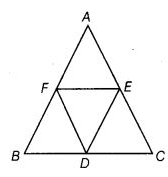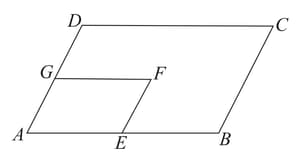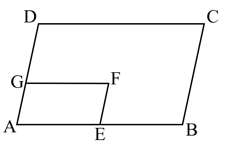NCERT Solutions for Chapter: Quadrilaterals, Exercise 2: Exercise
NCERT Mathematics Solutions for Exercise - NCERT Solutions for Chapter: Quadrilaterals, Exercise 2: Exercise
Attempt the free practice questions on Chapter 8: Quadrilaterals, Exercise 2: Exercise with hints and solutions to strengthen your understanding. NCERT Exemplar Mathematics - Class 9 solutions are prepared by Experienced Embibe Experts.
Questions from NCERT Solutions for Chapter: Quadrilaterals, Exercise 2: Exercise with Hints & Solutions
Diagonals and of a parallelogram intersect each other at . If and determine the lengths of and .
In and . and are the midpoints of and respectively. If the length of is , then find the value of in decimal form.
In the given figure, it is given that and are parallelograms. Can you say that ? Why or why not?

In the given figure, and are two parallelograms.

If and , then find the value of .
Can all the angles of a quadrilateral be acute angles? Give reason for your answer.
Can all the angles of a quadrilateral be right angles? Give reason for your answer.
Diagonals of a quadrilateral bisect each other. If and , then find the value of .
Opposite angles of a quadrilateral are equal. If and , then find the value of .

